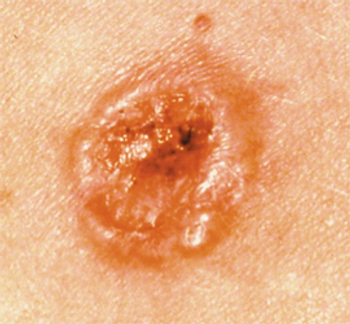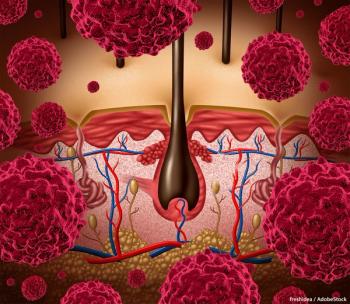
Criteria Identified to Select Melanoma Patients for Sentinel Lymph Node Biopsy
In patients with thin melanomas who are clinically node-negative, sentinel lymph node biopsy should be offered to patients with melanomas greater than 0.75 mm in Breslow thickness, according to the results of a recent study.
In patients with thin melanomas who are clinically node-negative, sentinel lymph node biopsy should be offered to patients with melanomas greater than 0.75 mm in Breslow thickness, according to the results of a recent study
“Approximately 70% of newly diagnosed melanomas are thin melanomas, however the use of and indications for sentinel lymph node biopsy in this population are controversial,” said study authors Stanley P. L. Leong, MD, of California Pacific Medical Center, Jonathan Zager, MD, and Dale Han, MD, of Moffitt Cancer Center. “In 2012, the SSO/ASCO and NCCN published guidelines for use of sentinel lymph node biopsy in melanoma, but these guidelines highlight the lack of consensus regarding use of this procedure for thin melanomas.”
In order to identify factors that may predict sentinel lymph node metastasis in thin melanomas, the researchers conducted a retrospective review of the Sentinel Lymph Node Working Group database from 1994 to 2012. During that time, 1,250 patients had thin melanomas and underwent sentinel lymph node biopsy.
“In our study, we demonstrated that thin melanomas have a considerable overall risk for sentinel lymph node metastasis (5.2%) and determined clinicopathologic predictors for sentinel lymph node disease that can serve as selection criteria for determining which patients should be offered sentinel lymph node biopsy,” the researchers told Cancer Network.
Specifically, their study found that rates of Breslow thickness greater than 0.75 mm, Clark level greater than IV, ulceration and absence of regression were significantly different between patients with positive and negative sentinel lymph nodes (P < .05). In a multivariable analysis, 6.3% of patients with Breslow thickness greater than 0.75 mm, 7% of patient with Clark level greater than IV, and 11.6% of patients with ulceration had sentinel lymph node disease.
“By using Breslow thickness of greater than 0.75 mm alone as the primary criterion for sentinel lymph node biopsy in thin melanoma cases, the vast majority of patients with sentinel lymph node metastases would be appropriately selected for the procedure and the yield for sentinel lymph node biopsy would be greater than 5%,” the researchers said. “In contrast, melanomas smaller than 0.75 mm had positive sentinel lymph node rates of less than 5% regardless of Clark level and ulceration status.”
In an
Newsletter
Stay up to date on recent advances in the multidisciplinary approach to cancer.
















































































